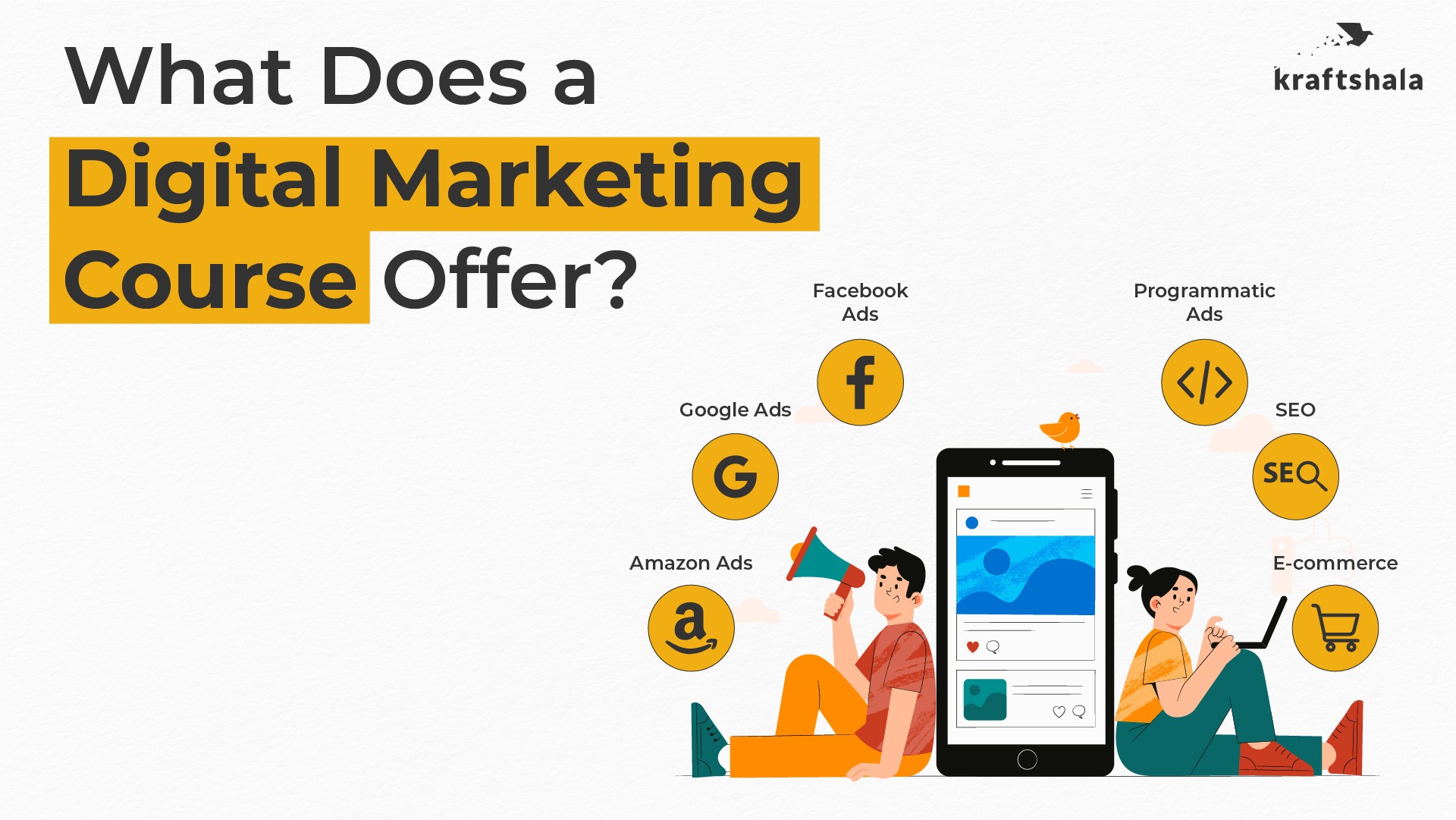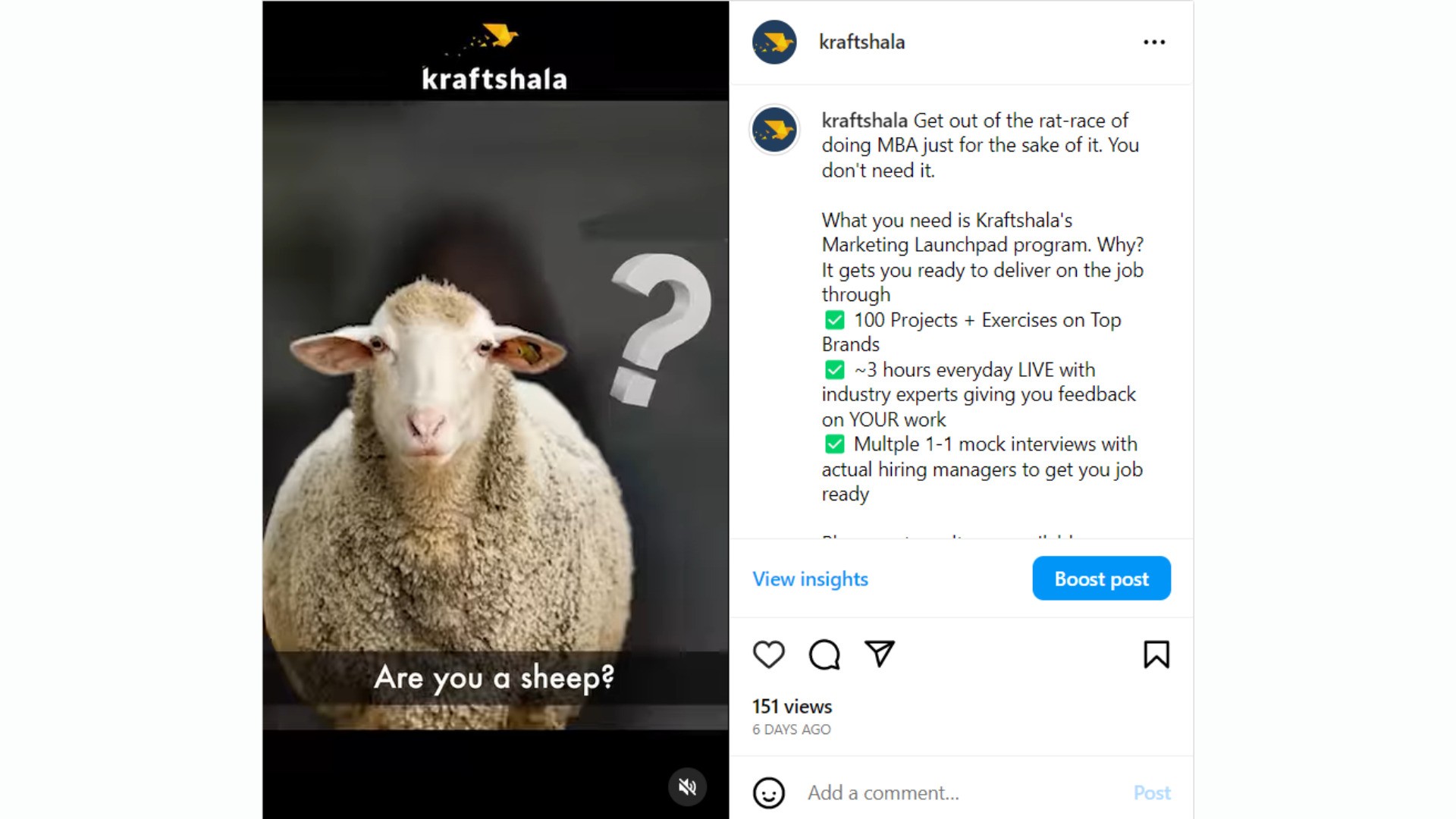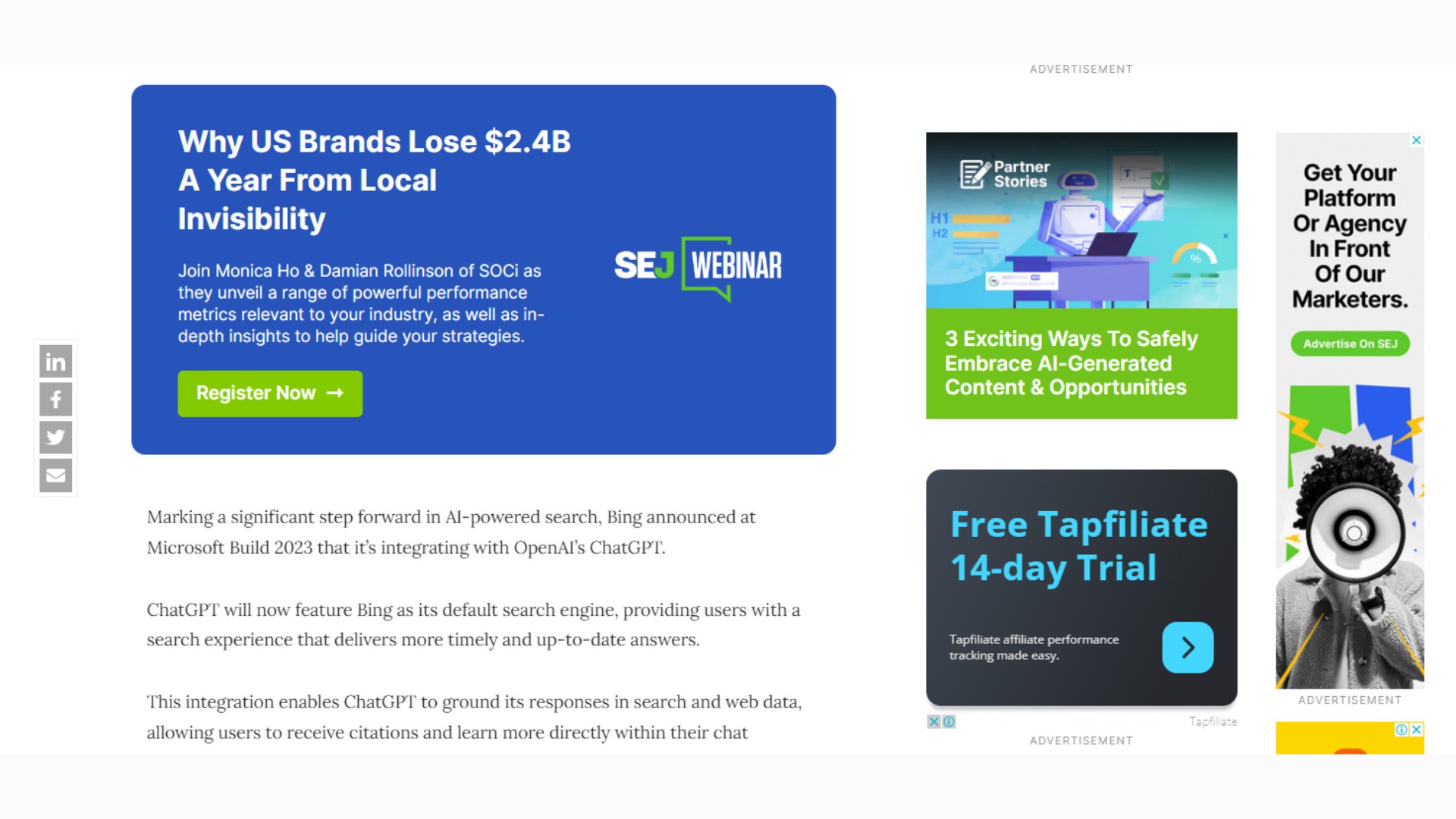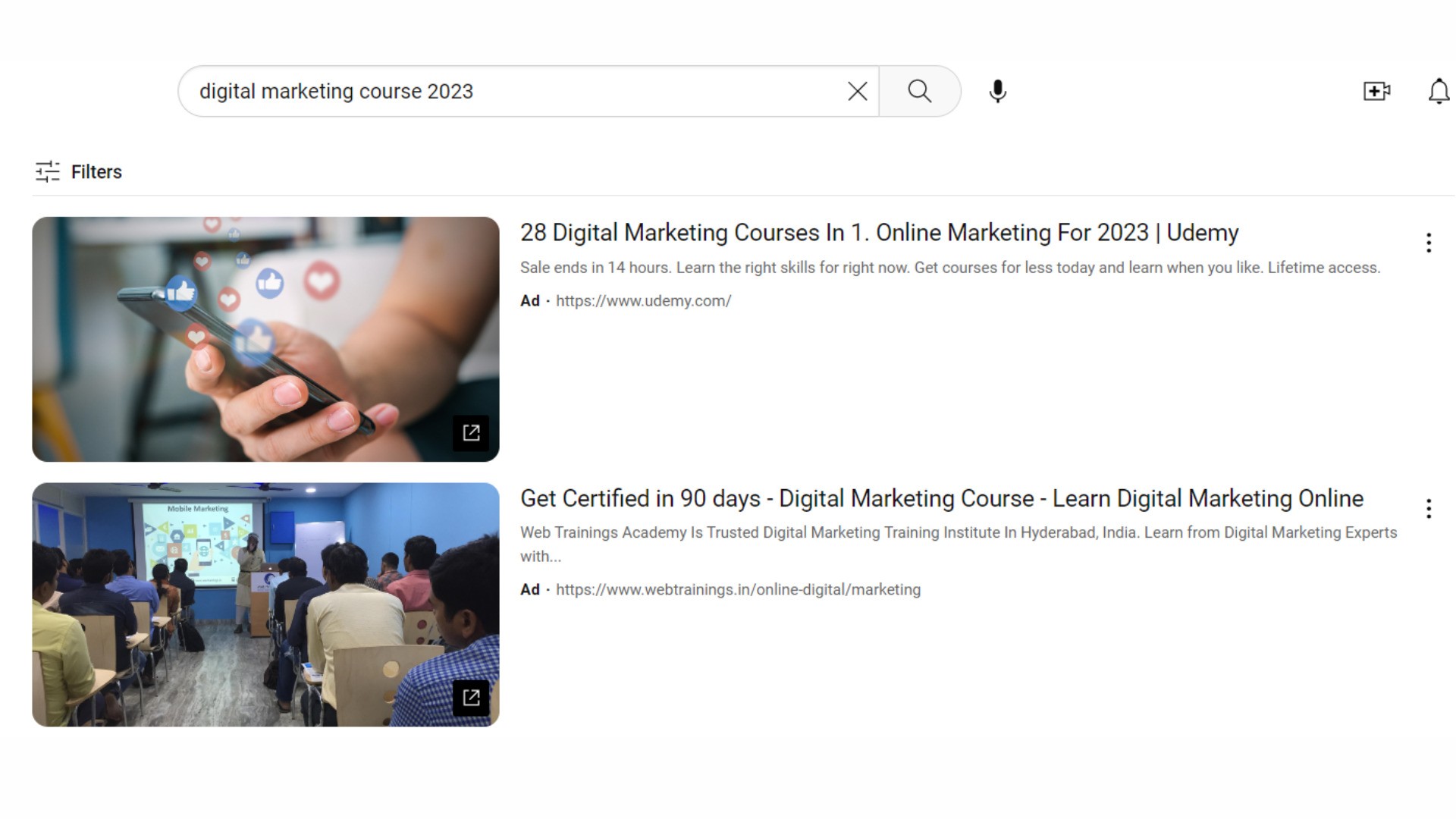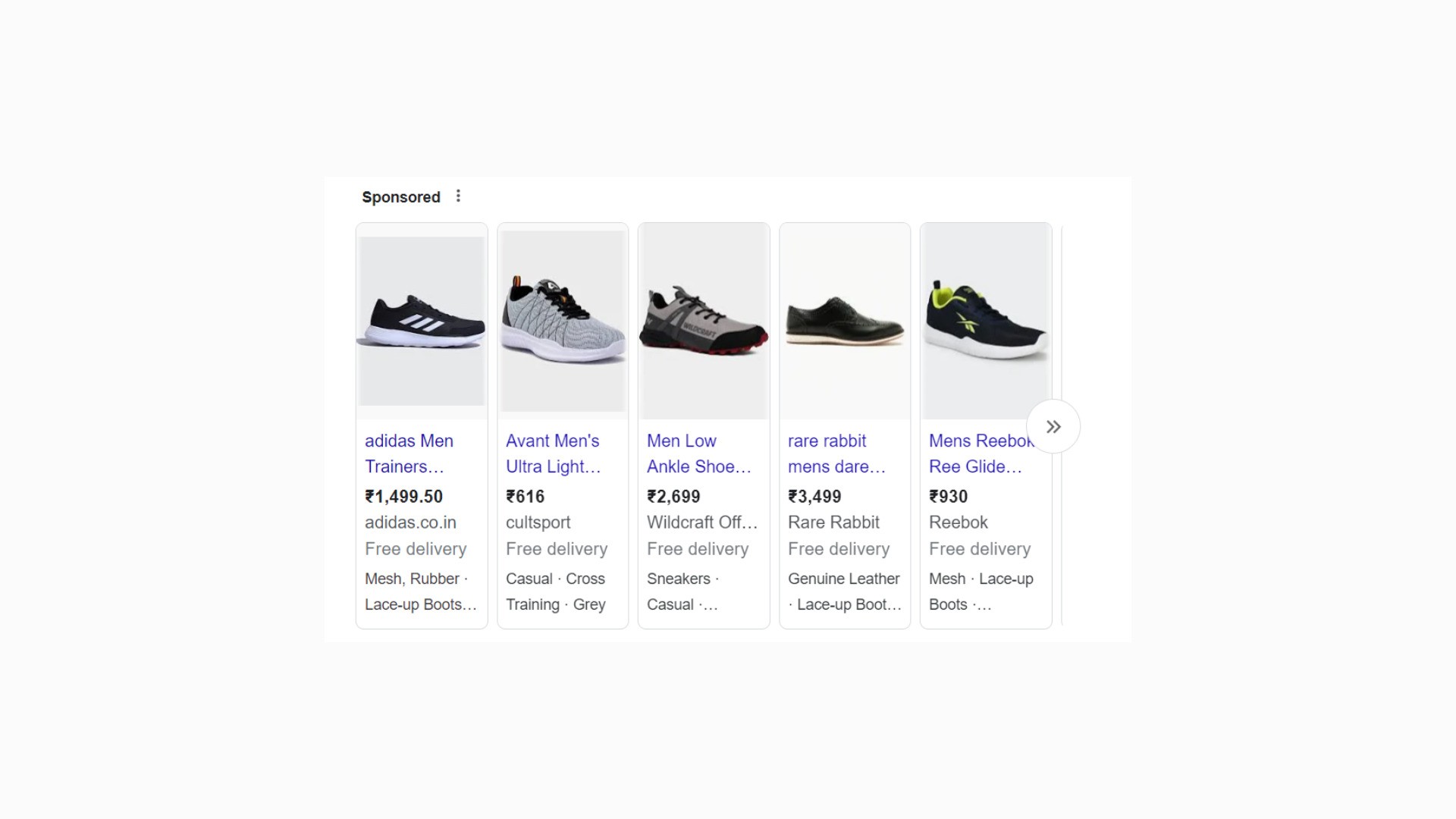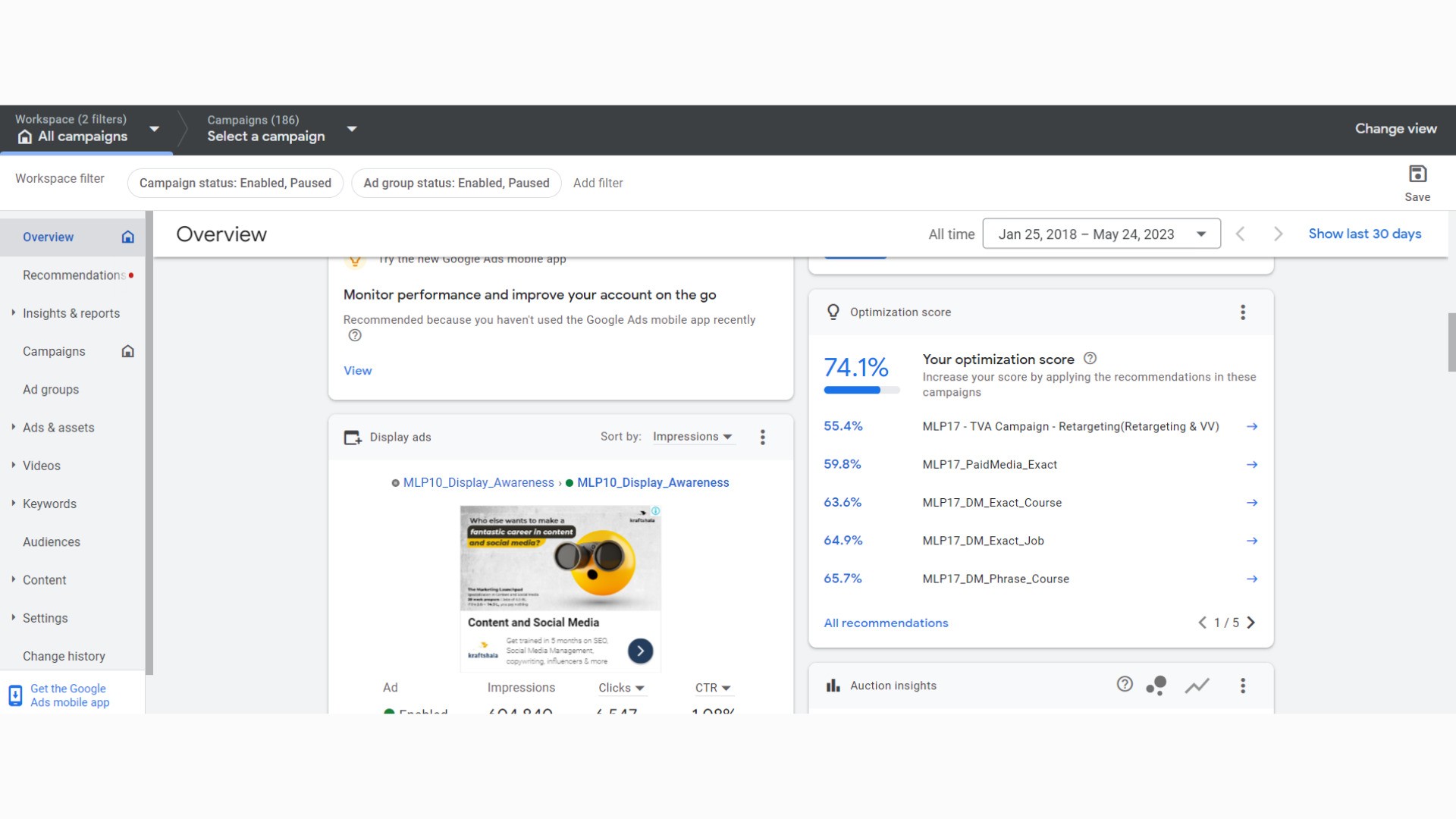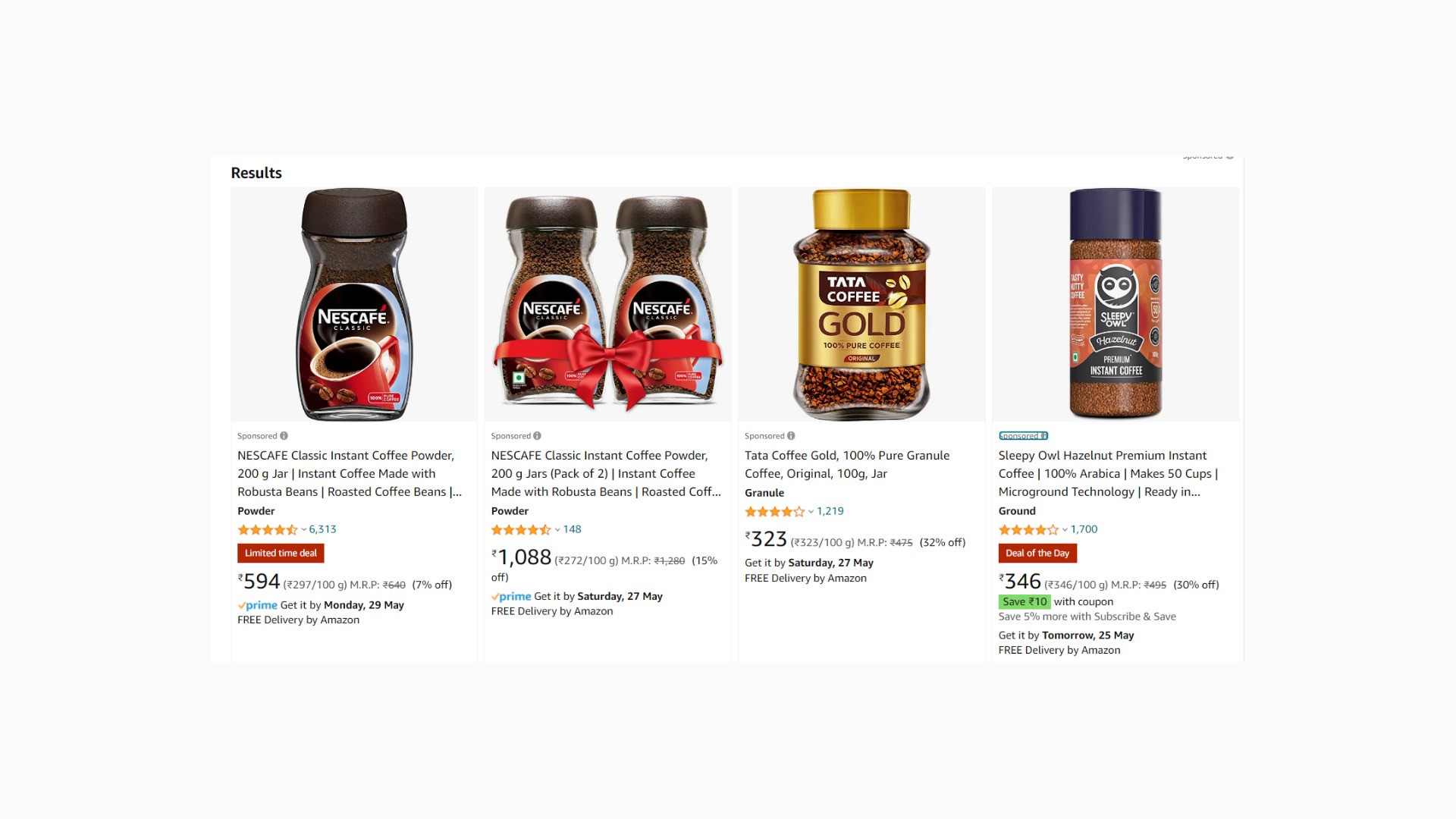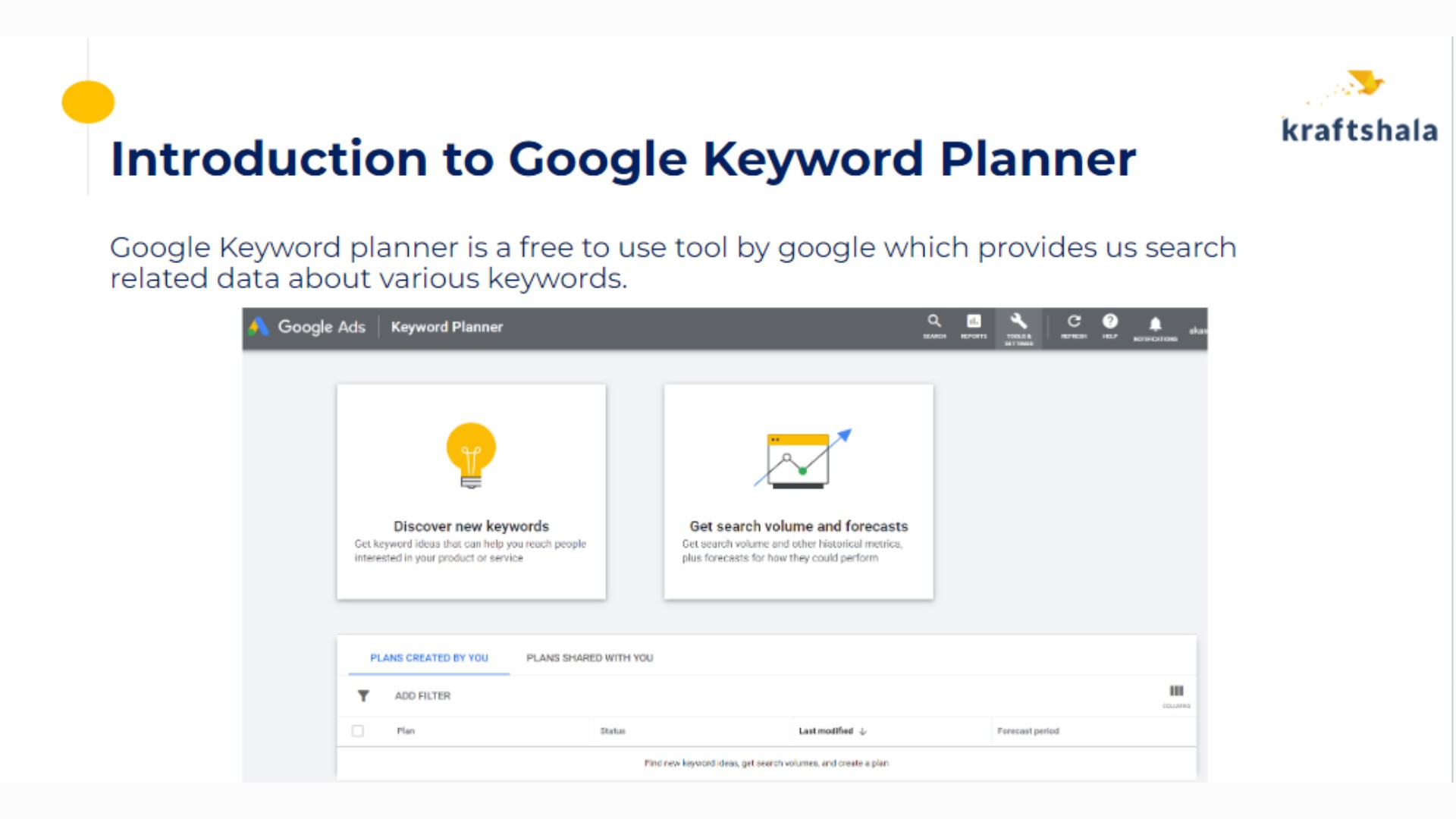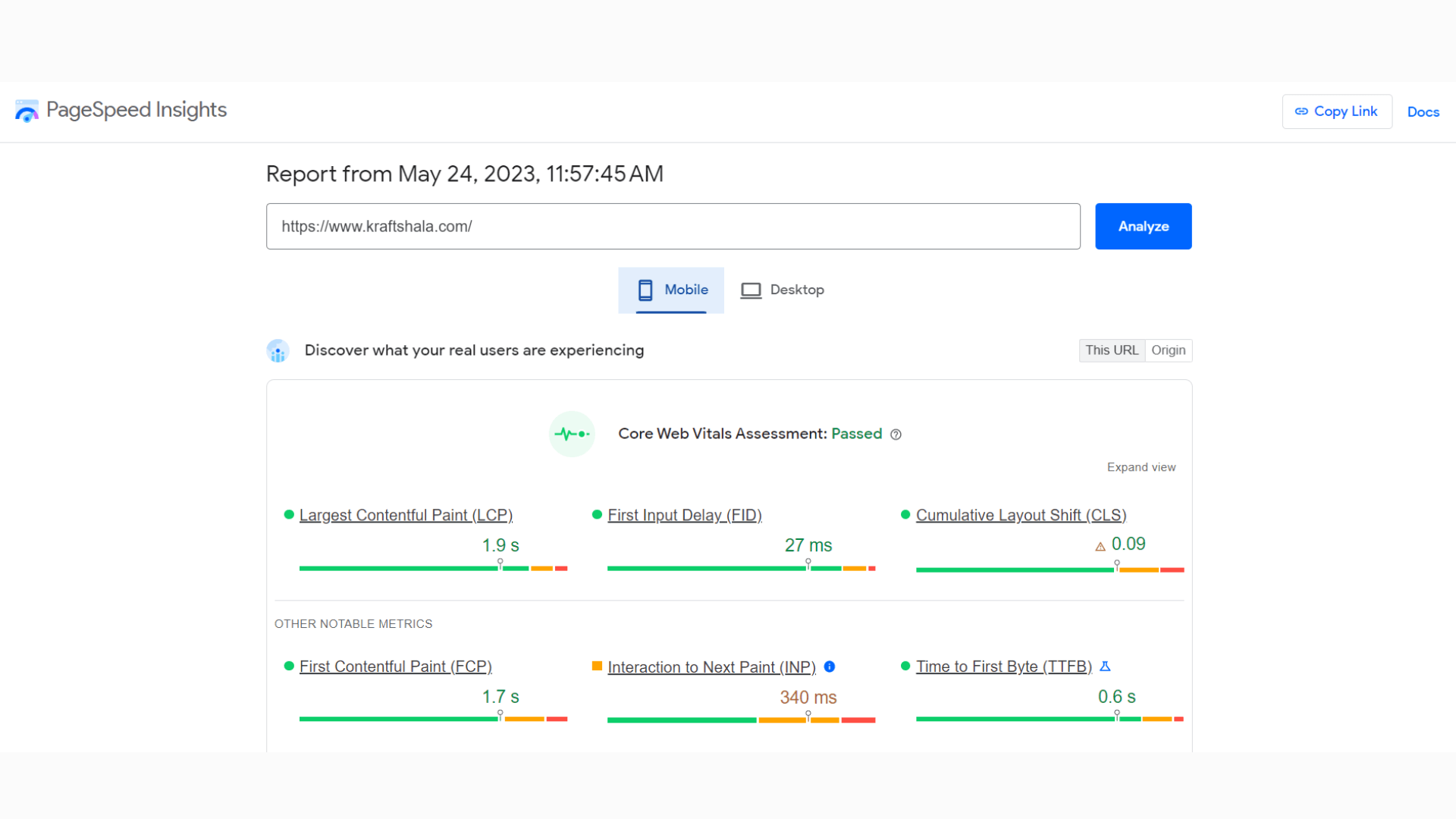What Does A Digital Marketing Course Offer? (Includes Course Syllabus)
Table of contents
- What You’ll Learn in This Blog:
- In-Depth Digital Marketing Course Syllabus
- Frequently Asked Questions:
So you’re interested in learning about the nitty-gritty of what you’ll study in digital marketing. Chances are, you’re even interested in taking up a digital marketing course. Or you’re looking forward to self-learn it.
In any case, if you’re interested in learning the digital marketing syllabus, and knowing what lies ahead, you’ve come to the right place.
You see, the digital marketing industry is enormous. It has a variety of fields.
Read Blog: Types of Digital Marketing Fields You Can Explore in 2023
Out of those fields, this blog focuses on giving you an in-depth understanding of what you get to study in a Comprehensive Digital Marketing Course that teaches Paid Digital Media Advertising, Search Engine Optimization, and E-commerce Marketing. Read on!
What You’ll Learn in This Blog:
Consider this blog to be the map that shows you the order of how you should proceed to learn digital marketing.
The digital marketing course syllabus has fifteen modules which are as follows:
- Module 1: Facebook Ads
- Module 2: Google Ads
- Module 3: Analytics for Paid Advertising
- Module 4: Amazon Advertising
- Module 5: Integrated Paid Media Planning
- Module 6: Programmatic Advertising
- Module 7: Keyword Research and On-Page SEO
- Module 8: Tech SEO
- Module 9: Off-Page SEO and Backlinking Strategy
- Module 10: Content Growth Plan
- Module 11: SEO Analytics
- Module 12: Setting Up an E-Commerce Store on a Platform
- Module 13: Setting Up a D2C Platform
- Module 14: Driving Business to E-Commerce Stores with Ads
- Module 15: Everyday Operational Tasks for an E-Commerce Person
As you go through this digital marketing course syllabus, you’ll understand the outcome of each module, and how they shape your proficiency so you can crack any job!
In-Depth Digital Marketing Course Syllabus
The entire journey of becoming proficient in digital marketing and getting into the industry includes you to learn Paid Media, SEO, and E-commerce.
The syllabus that you’re going to see is what 1000+ students have learned to get a job with a CTA of 4.5 LPA or more in digital marketing.
Module 1: Facebook Ads – Campaign Planning, Creation, and Analytics
This is what a Facebook Ad looks like:
And how do you learn to run one? Well, this module gets you inside the Facebook ad ecosystem.
Here, you learn how to plan, set up, and optimize ad campaigns for a brand to achieve various business objectives, including generating high-quality leads, driving traffic and sales, building reach and awareness, and more.
Towards the End of This Module, You’ll Learn the Following:
Campaign Planning Fundamentals:
- How to translate business goals into campaign goals
- Understanding Facebook, Instagram, Messenger, and Audience Network platforms
- Setting up Facebook pixel, SDK, and Offline Conversions
- Understanding buying and delivery processes on Facebook
- How ad billing works on Facebook
- Analyzing crucial metrics and their correlations
- Creating and managing ads
- Estimating budgets and setting KPIs
- Analyzing past campaign performance to inform future campaigns
Campaign Creation:
- Campaign structure and objectives
- Audience types and targeting strategies
- Bidding strategies and budgeting options
- Placement and ad format options
- Delivery types and ad review process
Campaign Management, Analysis, and Reporting:
- Reporting levels and data-driven decision-making
- Troubleshooting Facebook Pixel and SDK errors
- Analyzing campaign performance to determine optimization opportunities
- Evaluating campaign performance against planned outcomes and recommending a modified media plan as needed
- Attribution models and brand lift studies.
In Kraftshala’s digital marketing course with placement, this module is structured around Live Case Problems. This enables you to specialize in different business objectives relevant to a specific business. For example, lead generation for Ed-tech, app installs for Gaming and Fitness, or event responses for Event Management.
Module 2: Google Ads
Here’s an example of a type of Google Ads. We call it ‘Search Ads’.
To help you learn how to run ads on Google, this module gets you to explore how to show ads on Google’s search engine. Be well-prepared to plan, set up, run, and optimize campaigns to achieve their desired objectives, that being generating high-quality leads, driving traffic, increasing installs or sales, or building brand awareness.
Towards the End of This Module, You’ll Learn the Following:
Search Ads:
- Conducting keyword research
- Choosing effective keywords to run ads upon
- Understanding the Google Ad auction process
- Match types
- Campaign structuring on the Google Ads platform
- Preparing ad copies
- Running expanded text and responsive search ads
- Audience targeting – demographics, location, interests, in-market, etc.
- Optimization and auction insights
- Case studies: using search ads for different businesses
- Setting up and running a search ad to solve a live business problem
Display Ads:
- Types of display ads and placements
- Campaign structuring on the Google Ads platform
- Preparing ad copies for various placements
- Audience list preparation – custom and retargeting lists
- Placement across the Google Ad Network and partners
- Case studies: using display ads for different businesses
- Setting up and running a display ad to solve a live business problem
Video Ads:
- Types of video ads and placements
- Running ads on YouTube via Google Ads
- Preparing ad format and copies
- Placement customization
- Case studies: using video ads for different businesses
UAC and Shopping Ads:
- Campaign setup process
- Optimizing UAC and Shopping Ads
- Managing the Google Merchant Centre
Here’s what a shopping ad looks like:
Module 3: Analytics for Paid Advertising
Digital marketing runs on data and analytics. After all, that’s how you know if your ads are paying off.
Hence, this module will help you learn how to effectively analyze the performance of a brand’s paid advertising and SEO campaigns.
Analytics will also help you gain insight into the behavior of the brand’s website visitors, including how they were acquired, their shopping behavior, and their conversion-related information.
Here’s a sneak peek into Google Ads’ Dashboard:
Now, Towards the End of This Module, You’ll Learn the Following:
- Analyzing consumer cohorts based on performance across various categories, keywords, devices, and geographies.
- Understanding the shopping behavior of users for top products, categories, and brands.
- Using customer acquisition reports to make informed marketing decisions and optimize marketing strategies.
- Targeting high-value users while limiting spending on low-value users through demographic and geographic data.
- Utilizing audience interests, such as affinity categories and in-market segments, to target users across multiple platforms.
- Identifying and optimizing pages with high bounce rates, slow loading times, and low event occurrences to improve website SEO.
- Understanding the impact of marketing activities through attribution reports and using this information to make future budget decisions.
- Identifying the best candidates for retargeting.
- Creating a recommendation engine to identify which products are often sold together.
- Analyzing the top assisted channels and last interactions for conversions.
- Visualizing user flow after triggering a campaign and understanding user interactions to optimize future campaigns.
The end goal of this module is to teach you to make informed marketing decisions, optimize your marketing strategies, and effectively target high-value users.
Module 4: Amazon Advertising
Amazon as a platform is getting big. And it’s become a new platform for e-commerce brands to start showing ads on the platform.
Like this:
So, this module focuses on Amazon Ads and how to prepare your brand for advertising on the platform. The outcome of this module is that you will learn how to set up and manage campaigns using different ad products and targeting strategies to achieve your objectives.
Towards the End of This Module, You’ll Learn the Following:
- Preparing your brand for Amazon Advertising by optimizing product details, customer reviews, inventory, and A+ content
- Understanding the self-serve and managed products available on Amazon Ads, including Sponsored Products, Sponsored Brands, Stores, Sponsored Displays, DSP, and Display
- Planning advertising objectives across the funnel and selecting the right ad products to achieve them
- Using targeting, placements, bidding strategies, and key metrics to track performance and optimize campaigns
- Auditing and managing Amazon ad accounts to ensure campaign success
Module 5: Integrated Paid Media Planning
Once you learn both Facebook and Google ads, the next step for you is to combine those two to then create a bigger, integrated campaign for a brand.
This module should teach you the process of creating an integrated paid media plan using Facebook and Google Ads. This is an application to everything you’ve learned about paid ads to help you perform in your jobs.
Towards the End of This Module, You’ll Learn the Following:
- Developing an integrated marketing strategy utilizing Facebook and Google Ads
- Creating an effective paid media plan
- Identifying campaign KPIs and breaking them down into platform-specific metrics
- Allocating budgets based on strategic logic
- Leveraging past data to make informed decisions
- Presenting insights and recommendations for campaign optimizations
Kraftshala differentiates your learning here by taking you through detailed case studies to help you learn how to effectively allocate budgets, monitor performance, and make data-driven decisions for a select brand.
Module 6: Programmatic Advertising
With the world of AI growing, Programmatic Advertising is on the rise. Some even consider it to be trending. And so it’s a must for you to learn it.
Programmatic advertising is an automated way of advertising and media planning. What’s key for you to learn is to have a good understanding of programmatic advertising and its ecosystem.
Towards the End of This Module, You’ll Learn the Following:
- Introduction to Programmatic Advertising and its Ecosystem
- Overview of AdExchange, Ad Networks, DSP, SSP, and DMPs
- Understanding various deal types, including Open Auction, PMP, Preferred Deal, and PG Deal
- Introduction to DV360
At Kraftshala’s FB and Google Ads Course, we cover the key players in the programmatic space and various deal types, including Open Auction, PMP, Preferred Deal, and PG Deal.
Module 7: Keyword Research & On-Page SEO
This module marks the start of your journey in the world of SEO.
It teaches you how to conduct keyword research for a brand and optimize its website’s on-page elements for better rankings. Consider this the start of creating a kickass SEO strategy for a brand, much like Canva’s.
Towards the End of This Module, You’ll Learn the Following:
- To generate relevant keywords for your business.
- To map keywords to relevant pages on your website.
- You’ll learn how to identify new content ideas and page suggestions.
- How to edit on-page HTML tags and page content to rank higher while understanding the importance of On-Page SEO.
- How to structure the heading tags of your page optimally.
- Conduct an audit of a page or website and identify potential gaps.
- Use SEO tools like Moz, Ubersuggest, Semrush, and Google Keyword Planner.
Module 8: Tech SEO
This module will teach you about the technical side of SEO and how to improve your website’s performance.
For example, we look at Page Speed Insights to check the loading speed of our website.
Towards the End of This Module, You’ll Learn the Following:
- Coding fundamentals, site navigation, siloing, bread-crumbing, and overall website structure.
- How to identify missing Meta tag elements across your website.
- How to identify pages with errors in response codes across multiple pages of your website.
- A detailed understanding of website tech elements that help the Google crawler understand your page.
- Core Web Vitals and Page Speed Analysis and how they affect your website’s performance.
- How to improve the page speed of your website.
- Use of structured data schemas on the page.
- How to use SEO tools like Screaming Frog, Google Page Speed Insights, and GTMetrix.
Module 9: Off-Page SEO & Backlinking Strategy
Once you know the ins and outs of On-Page SEO and Tech SEO, comes the part where you learn how to have other people advertise you on their website.
This module teaches you how to improve your website’s authority and SEO ranking with the help of Off-page activities. The objective of this module is to help you create Off Page SEO & Backlinking Strategy and apply your new knowledge to improve your website’s SEO performance.
Towards the End of This Module, You’ll Learn the Following:
- A detailed understanding of the importance of Off-page SEO and link juice.
- How to build the authority of your website with the help of Off-page activities.
- How to conduct off-page analysis in terms of backlinks and competitors.
- How to generate more backlinks and increase the distribution of your content.
- How to improve the DA (Domain Authority) and page speed to increase SEO ranking.
- Guest post outreach methods and email writing techniques.
- How to create a diverse Backlinking plan and execute backlinks effectively.
Module 10: Content Growth Plan
Now that you’ve mostly covered all the fundamentals of creating a good SEO strategy for a business, this module will take you a step further. You’ll learn how to develop a Content Growth Plan for your website.
Towards the End of This Module, You’ll Learn the Following:
- Basic principles of content creation from an SEO perspective. This includes improving the webpage and suggesting content ideas that the brand should focus on.
- How to create a detailed content/blog-creating plan that aligns with your SEO goals and strategy.
- How to predict SEO growth for any project, so you can set realistic expectations and measure your success.
Module 11: SEO Analytics
Now, how do you mark your progress, or understand where to go? This module will teach you how to navigate and fetch data from various SEO tools, including Google Search Console and Google Analytics.
Towards the End of This Module, You’ll Learn the Following:
- How to continuously track and create reports of SEO metrics, so you can monitor your website’s performance over time.
- How to generate various reports, including Keyword Research, Keyword Mapping, Tech Optimization, Technical Audit, Off-page, Detailed Page Speed, and Traffic reports using Google Analytics and Google Search Console.
- How to set up and track conversion goals in Google Analytics, so you can measure the effectiveness of your SEO strategy.
- How to integrate Search Console and Google Analytics data to optimize website performance.
- A detailed understanding of how to analyze sources of traffic, content on your website, user behavior, and other SEO performance metrics.
- How to improve and optimize website performance based on important metrics like Bounce rate, Exit Rate, Average time spent on a page, and Page views.
Module 12: Setting up an E-commerce Store on a Platform
Once you’re done with SEO, you’ll then be introduced to the world of E-commerce Marketing to Convert.
This module will teach you how to set up a shop online. You’ll get an overview of E-commerce platforms, consumer journeys, and the fundamentals of creating a product page on these platforms.
Towards the End of This Module, You’ll Learn the Following:
- The different E-commerce platforms available and learn how to choose the right domain for your online store.
- Key components of an E-commerce website, including the Home Page, Category Pages, Product Pages, and Stores, so you can create an effective and user-friendly online shopping experience for your customers.
- A deep understanding of the shopper journey on E-commerce platforms, including how to attract and engage potential customers, drive conversions, and build loyalty.
- Basics of E-commerce SEO, so you can optimize your product pages and improve your visibility in search engine results.
Module 13: Setting Up a D2C Platform
This module teaches you how to sell products directly to consumers without any intermediaries or third-party retailers involved – to set up a D2C (Direct-to-Consumer) Platform.
Towards the End of This Module, You’ll Learn the Following:
- Understand the differences between Direct to Consumer (D2C) and E-commerce Platforms
- Learn how to set up a store on Shopify
- Create a responsive and mobile-first design for D2C
- Gain knowledge about Conversion Rate Optimization (CRO) techniques
Module 14: Driving Business to E-Commerce Stores with Ads
In this module, you will learn about different types of ads that are used to promote your products and drive business.
Towards the End of This Module, You’ll Learn the Following:
- Discover how to use Amazon Ads, such as Sponsored Product, Sponsored Display, and Sponsored Brand to achieve different brand objectives.
- Learn about Amazon Managed Ads like Display Ads & Programmatic DSP Ads, which can be used to achieve different brand objectives.
- Find out how to use Facebook Ads, such as Awareness, Video Views, Conversions, and Catalog ads, to drive traffic and sales to your E-Commerce website.
- Understand the use of Google Ads, including Search, YouTube, shopping, and display ads, which can help you boost your business by attracting more customers.
Module 15: Everyday Operational Tasks of an E-Commerce Person
Now that you’ve learned how to promote E-Commerce stores, this module will teach about the everyday operations of an E-Commerce Executive.
Towards the End of This Module, You’ll Learn the Following:
- How to Forecast and Plan Inventory
- Create a merchandising calendar and consider different merchandising strategies
- Make P&L decisions based on sales data
- Manage customer reviews, ratings, and conflicts to maintain a positive brand image.
This course is a pretty comprehensive one, where you’ll be entering the world of digital marketing through various doors – Paid Advertising, SEO, and E-Commerce. In the course of 22 weeks, this becomes your journey to getting a job in digital marketing. With over 1000 students placed, we guarantee that.
Frequently Asked Questions:
Q. Who is this digital marketing course for?
Kraftshala’s digital marketing course is particularly designed for people who want to start their careers in digital marketing. That said, this course is for people who are freshers, have recently graduated and also for people who want to switch careers. You can check out some of our alumni here:
Q. Are there any specific tools or software covered in this digital marketing course’s syllabus?
Yes, plenty! We cover the following tools:
- Google Search Console
- Google Analytics
- Google Page Speed Insights
- Google Keyword Planner
- Ubersuggest
- Google Ads
- Meta
- Amazon Marketing Services
- Google Trends
- Moz
- Screaming Frog
…and more! Check them out here.
Q. How long will this digital marketing course last?
Kraftshala’s digital marketing course has two schedules, full-time and part-time.
Full Time: It’s a 19 weeks training schedule, where you’ll be trained for 19 weeks, Monday to Saturday. And post 19 weeks as you get placement ready and pass all your benchmarks, you’ll sit for placements.
Part-Time: It’s a 33-week training course, where you’ll be trained for 33 weeks, and after you get placement ready and pass all your benchmarks, you’ll sit for placements.



